If you’re traveling and staying in Tbilisi, you can visit several places in just one day. It should be noted right away that this will be a whirlwind tour-Uplistsikhe alone feels like a place you could explore for an entire day.
Route#
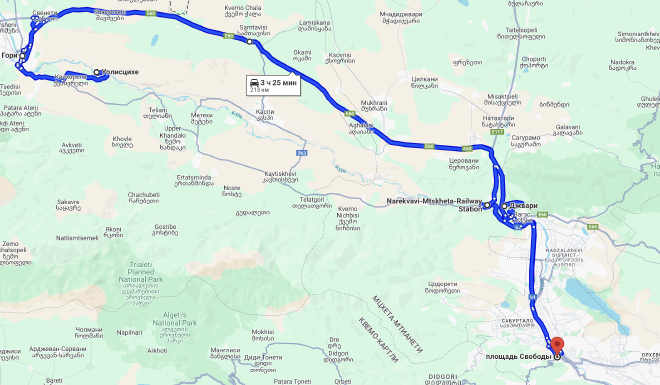
Approximate route on Google Maps. The total distance is about 215 kilometers, with 4–5 hours on the road. That doesn’t leave a lot of time for exploring each location.
How to Get There#
You’ve got four options: a group tour, a private tour, a car with a driver, or renting a car. I chose a group tour and booked it via Tripster. Below are some current options for visiting the Jvari Monastery, Stalin Museum, and the cave town of Uplistsikhe.
Group Tour#
✅ Pros:
- Cheap, usually between €15 and €25;
- A guide will share interesting facts along the way;
- If you’ve got time, you can revisit your favorite places later.
❌ Cons:
- Large groups (up to 20 people) - you’ll have to follow the group’s schedule and wait for everyone at each stop;
- Very little time at each location, everything’s a bit rushed.
This is the option I chose, so you’ll find more about it further down. You can book one by filtering by city and tour type on Tripster. Part of the fee is paid online, the rest in cash at the meeting point. They accept lari, dollars, and euros, but change is only given in lari. These tours are also sold on the street - everyone ends up at the same buses anyway.
Similar tours are available on Sputnik8, but they seem pricier, and I haven’t used them, so I can’t vouch for the experience.
Private Tour#
✅ Pros:
- You control the timing and stops, and can tweak the route slightly;
- More comfort, no need to squeeze into a minibus;
- A guide will share interesting stories along the way;
- No waiting around for others at each stop.
❌ Cons:
- Expensive, usually between €150 and €200.
You can find these on Tripster, though it might not be worth it compared to renting a car, which is cheaper.
Car with a Driver#
✅ Pros:
- Same benefits as a private tour, but without the guide.
❌ Cons:
- More expensive than a group tour, around $65 to $80;
- The driver may not be able to provide historical context like a professional guide can.
I recommend GoTrip - I used it for a trip to Borjomi and had a good experience.
Car Rental#
✅ Pros:
- You decide where to go, how fast, and when to stop.
❌ Cons:
- More expensive than hiring a car with a driver - for example, a trip to Sighnaghi cost me $65, even though it’s a shorter route than Tbilisi -> Mtskheta -> Gori -> Uplistsikhe -> Tbilisi;
- If you’re interested in historical background, you’ll have to read everything yourself.
You can rent from LocalRent, GetRentaCar, or other services, including local agencies. Local rentals are often cheaper.
Timeline#
A bit of history in an easy format: the chart below shows the founding years of the cities included in the tour.
Mtskheta and Jvari#
The first stop of the group tour is Jvari and Mtskheta.
Jvari#
“Jvari” translates to “cross.” The monastery stands high on a mountain above Mtskheta, with a cross placed by Saint Nino, who brought Christianity to Georgia. Built in the 7th century, it is a UNESCO World Heritage Site.
Horses greet you near the monastery:
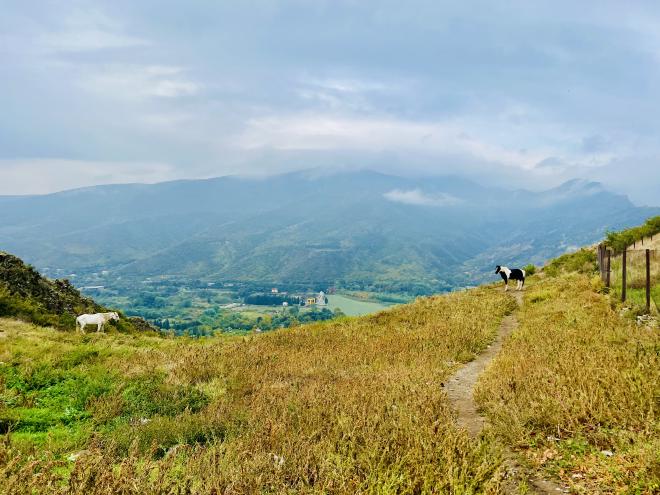
The monastery itself looks like this:
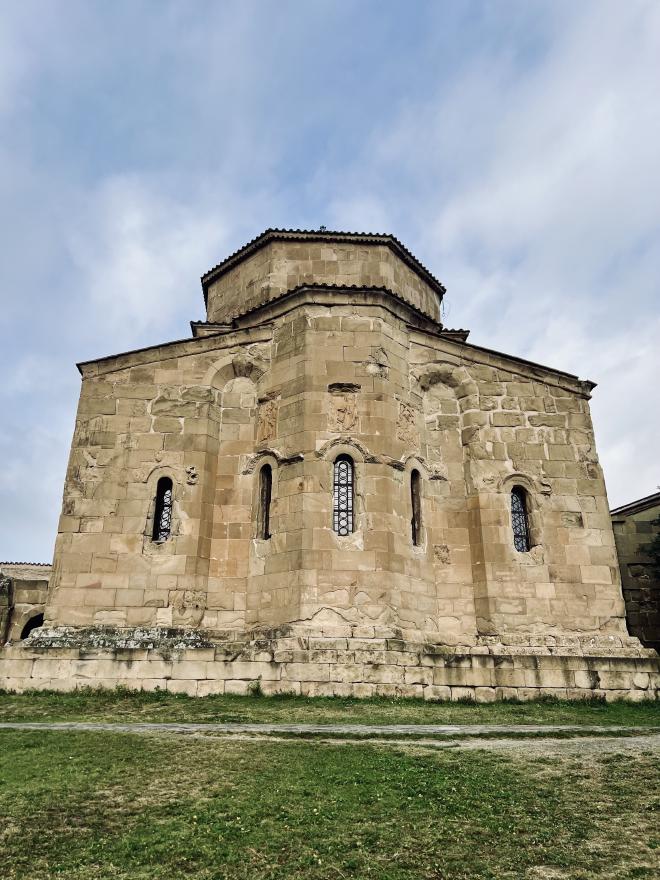
You can go inside. And from the monastery, you get a stunning view of the confluence of the Kura and Aragvi rivers:
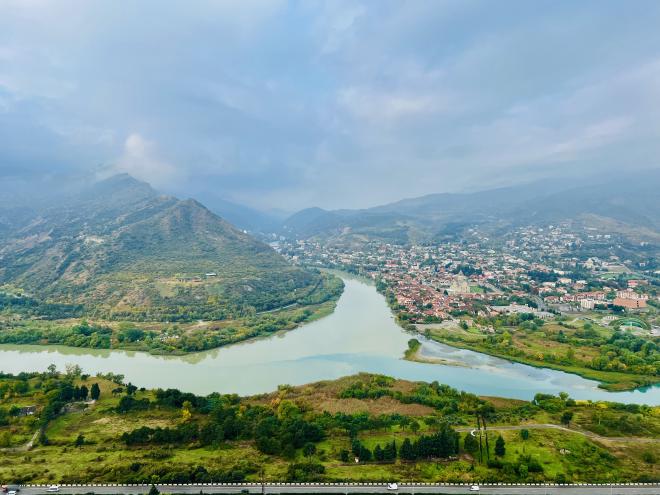
Mtskheta#
Mtskheta is the ancient capital of Iberia (an early Georgian kingdom), founded over 2000 years ago. The city lies at the confluence of the Kura (Mtkvari) and Aragvi rivers and is one of Georgia’s main religious centers. The Svetitskhoveli Cathedral, built in the 11th century and a UNESCO site, is located here. The cathedral is considered a holy place because, according to legend, it houses the robe of Jesus Christ. Mtskheta symbolizes Georgia’s adoption of Christianity in the 4th century.
The Svetitskhoveli Cathedral from the outside:
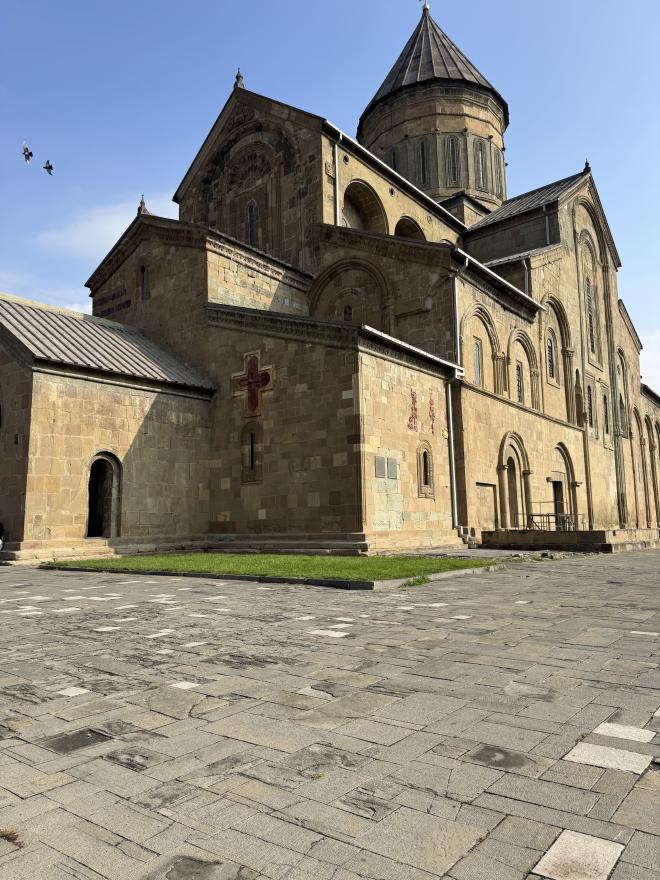
Entry is allowed:
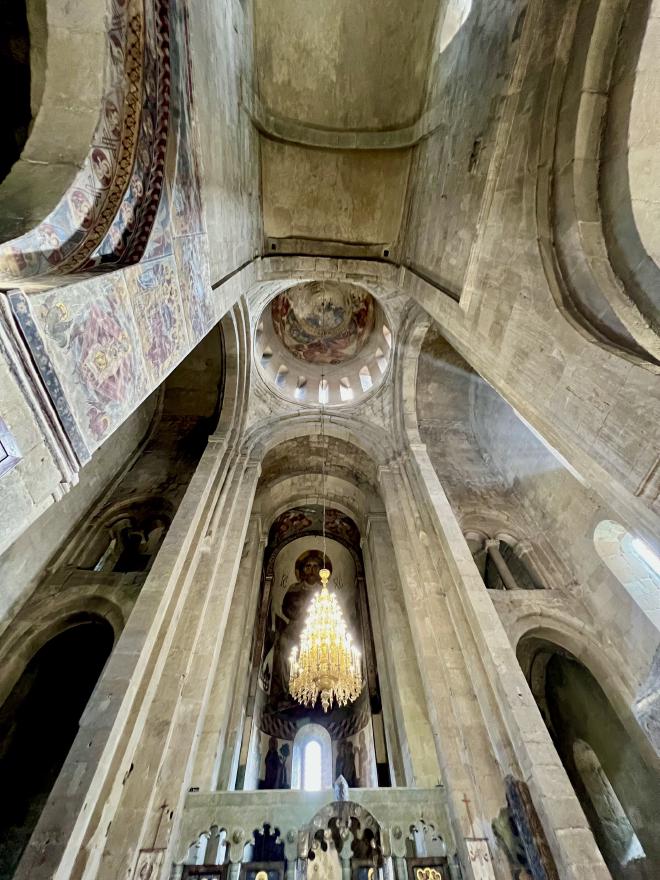
Near the cathedral, guides often share the story of the robe - that it was brought to Mtskheta by a Jewish priest named Elioz, who had been in Jerusalem on the day of the Crucifixion. He bought it from Roman soldiers and brought it back. Legend says it was buried with his sister Sidonia, who died immediately upon touching it due to its holiness. A cedar tree later grew over her grave, becoming a powerful symbol for Georgian Christians.
Gori and Stalin Museum#
After Mtskheta, the group tour continues to Gori for a visit to the Stalin Museum and lunch. The city is famous for being Stalin’s birthplace and draws many tourists for that reason.
One of the highlights is Stalin’s personal train carriage - you can go inside. It even had air conditioning!

There are many photos and documents among the exhibits, as well as gifts given to Stalin. Here’s a carpet, for example:
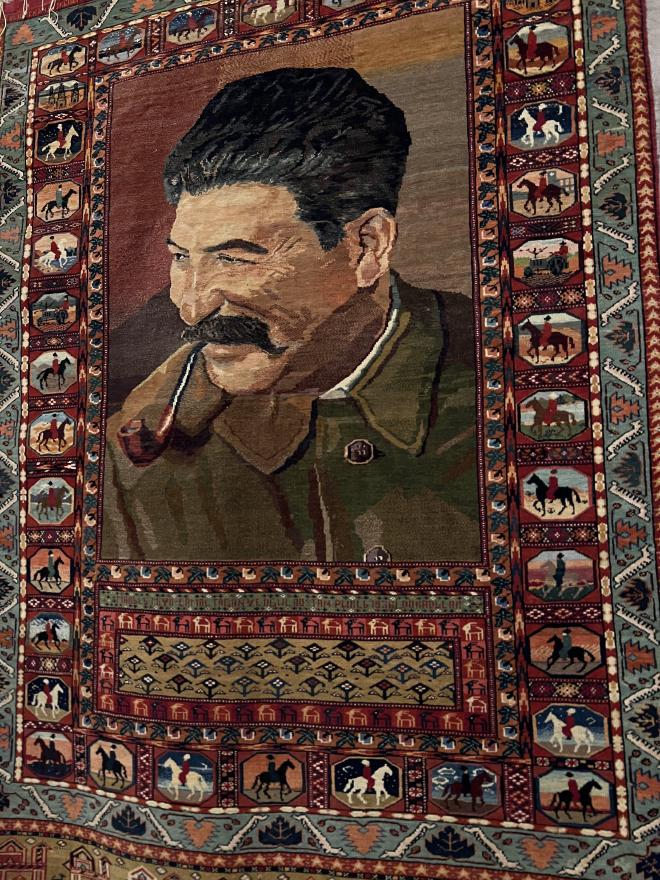
If you’re not on a strict group schedule and have your own car, you might want to skip this stop. The museum is very crowded, and the guides are hard to hear due to simultaneous tours in various languages.

By the way, admission costs 15 GEL per person.
Uplistsikhe#
The final stop, Uplistsikhe, is an ancient cave city founded around 1000 BC. It thrived as a cultural and religious hub, especially before Christianity spread. The city is literally carved into rock on a hillside.
The views are, of course, stunning:
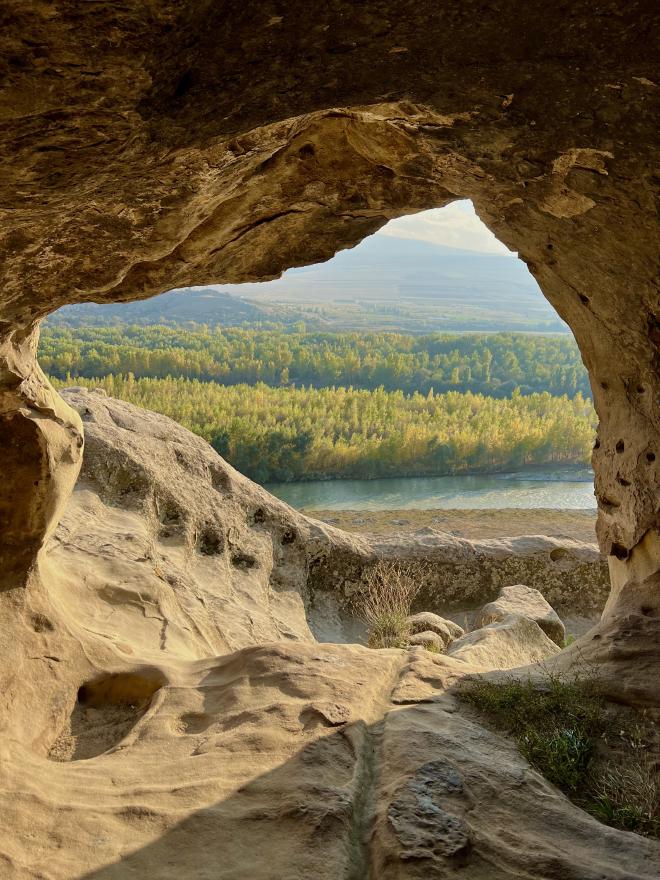
The city used to be hidden from invaders and protected by a labyrinth of tunnels, which helped it survive invasions and sieges.
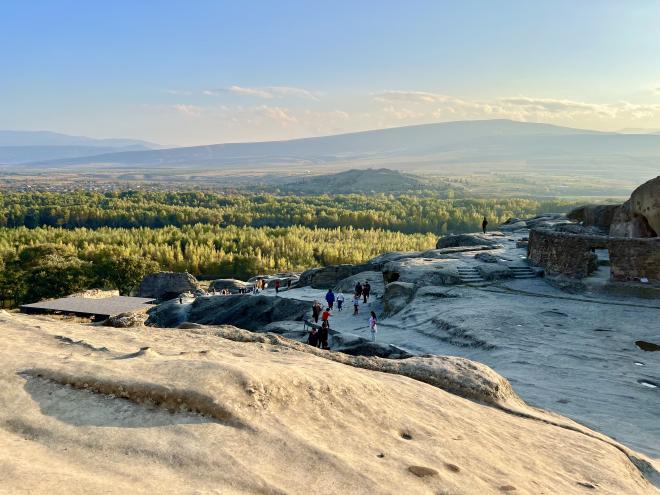
According to the guide, there’s even something like a pharmacy with medicinal herbs and a wine cellar.
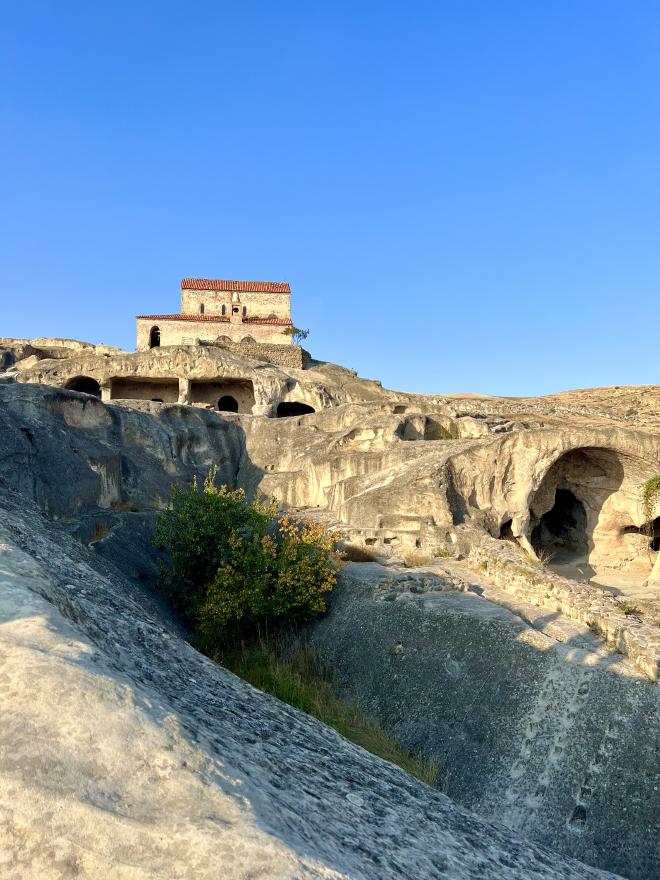
The group tour allows about an hour and a half for the visit. If possible, go independently by car or with a driver - you could easily spend hours wandering here.

The entrance ticket costs the same as the Stalin Museum - 15 GEL. But the experience is far more impressive.